
Tazio Giorgio Nuvolari was an Italian racing driver. He first raced motorcycles and then concentrated on sports cars and single-seaters. Originally of Mantua, he was nicknamed Il Mantovano Volante and Nuvola ("Cloud"). His victories—72 major races, 150 in all—included 24 Grands Prix, five Coppa Cianos, two Mille Miglias, two Targa Florios, two RAC Tourist Trophies, a Le Mans 24-hour race, and a European Championship in Grand Prix racing. Ferdinand Porsche called him "the greatest driver of the past, the present, and the future".

The Italian Grand Prix is the fifth oldest national motor racing Grand Prix, having been held since 1921. Since 2013, it has been the Grand Prix held the most times, with 93 editions as of 2023. It is one of the two Grands Prix which has run as an event of the Formula One World Championship Grands Prix every season, continuously since the championship was introduced in 1950. Every Formula One Italian Grand Prix in the World Championship era has been held at Monza except in 1980, when it was held at Imola.

Otto Wilhelm Rudolf Caracciola was a racing driver from Remagen, Germany. He won the European Drivers' Championship, the pre-1950 equivalent of the modern Formula One World Championship, an unsurpassed three times. He also won the European Hillclimbing Championship three times – twice in sports cars, and once in Grand Prix cars. Caracciola raced for Mercedes-Benz during their original dominating Silver Arrows period, named after the silver colour of the cars, and set speed records for the firm. He was affectionately dubbed Caratsch by the German public, and was known by the title of Regenmeister, or "Rainmaster", for his prowess in wet conditions.
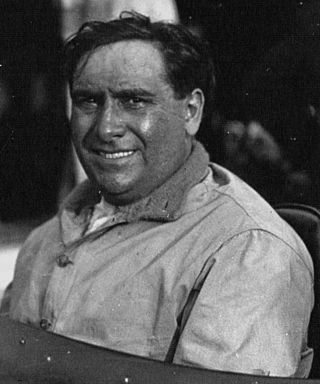
Giuseppe Campari was an Italian opera singer and Grand Prix motor racing driver.

Baconin Borzacchini was an Italian racing driver who often competed under the nom de courseMario Umberto Borzacchini.

The Alfa Romeo P3, P3 monoposto or Tipo B was a classic Grand Prix car designed by Vittorio Jano, one of the Alfa Romeo 8C models. The P3 was first genuine single-seat Grand Prix racing car and Alfa Romeo's second monoposto after Tipo A monoposto (1931). It was based on the earlier successful Alfa Romeo P2. Taking lessons learned from that car, Jano went back to the drawing board to design a car that could last longer race distances.

The 1933 24 Hours of Le Mans was the 11th Grand Prix of Endurance. It took place at the Circuit de la Sarthe on 17 and 18 June 1933. Up against five strong privateer entries from Alfa Romeo, the opposition looked fairly weak, mostly being of 1920s vintage. There was a strong British contingent in the smaller classes. The big drawcard was the presence of top European drivers Louis Chiron and Tazio Nuvolari. The current European champion was paired with one of the previous year's winners, Raymond Sommer
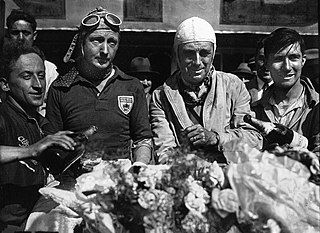
The 1931 24 Hours of Le Mans was the 9th Grand Prix of Endurance that took place at the Circuit de la Sarthe on 13 and 14 June 1931.
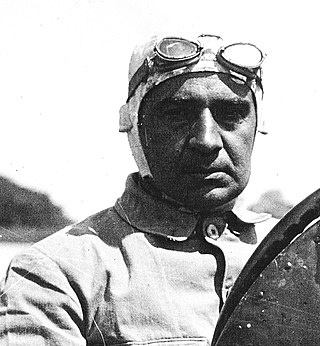
Ferdinando "Nando" Minoia was an Italian racing driver with an exceptionally long, distinguished and varied career. In 1907, he won the Coppa Florio driving an Isotta Fraschini. In 1923, he drove the world’s first mid-engine Grand Prix car, the Benz Tropfenwagen. In 1927, he won the inaugural Mille Miglia driving an OM. Finally, in 1931 he became the first European Champion, driving for Alfa Romeo, but without winning a single event.

The 1931 Grand Prix season was a watershed year, with the advent of the AIACR European Championship. After several years of Grand Prix racing in the doldrums with little technical development, 1931 saw new models come from all three main manufacturers: Bugatti, Maserati and Alfa Romeo.

The 1932 Grand Prix season marked the second year of the AIACR European Championship. It saw the debut of Alfa Romeo's sensational new Tipo B and with it, Tazio Nuvolari won the Championship driving for the Alfa Corse works team. The 40-year old Nuvolari won two of the three rounds and was second in the other. Still running to a Formula Libre rules for the cars, the regulations were revised to set the races to be between five and ten hours. However, all three national committees ran their races to the minimum time-limit.

The 1933 Grand Prix season was an intermediate year, as it would be the last season for the current AIACR regulations before a new weight-formula was introduced in 1934. As such, the European Championship was not held and the manufacturers held back on further developments of their existing models. Alfa Romeo, following an Italian government financial bailout and like Mercedes-Benz the previous year, had shut down its Alfa Corse works team. Scuderia Ferrari, their regular customer team took up the role of racing Alfa Romeos and a number of ex-works drivers moved across to join their ranks. They were not allowed, however, to buy the impressive Tipo B that had been so dominant in the previous season.
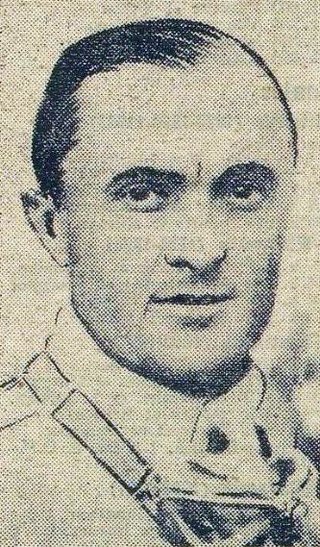
The 1928 Grand Prix season saw the Monegasque driver Louis Chiron, and his Bugatti, take seven Grand Prix victories.
The 1929 Grand Prix season was another interim year, where most races were run to Formula Libre rules due to a lack of regulations from the AIACR that would be popular for race organisers and manufacturers. This blurred the line between racing cars and sports cars with both competing in the same races. Bugatti won the major international races, with their drivers Louis Chiron and "W Williams". The Italian Championship proved very competitive, attracting many top drivers. There it was Alfa Romeo, using their 4-year old P2 model that claimed more victories, than their main competition coming from Bugatti and Maserati.
The 1930 Grand Prix season continued the malaise that had taken over the sport. Although there was little technical advance more privateer teams were forming, getting some factory support. The AIACR continued to mandate its fuel-regulated Formula Libre rules. Across the Atlantic, the AAA abandoned the AIACR regulations. Their new regulations were derisively called the “Junk Formula” by purists, opening up to their own version of Formula Libre: with modified stock-standard cars of up to 366 cu in (6-litres) with two seats.

The Tunis Grand Prix or Grand Prix de Tunis was a motor race held in the 1920s and 30s in Tunis, the capital of the African colony of the French protectorate of Tunisia.

The 1930 Targa Florio was a non-championship Grand Prix motor race held on 4 May 1930 on the Madonie Medio Course, a 67 mile (108 km) course made up of public roads on the mountainous Italian island of Sicily.

The 1933 French Grand Prix was a Grand Prix motor race which was run on 11 June 1933, in Montlhéry, France. Organized by the French Automobile Club, it was XXVII running of the Grand Prix de l'Automobile Club de France. The race, which was held over 40 laps, was won by the Italian driver Giuseppe Campari in a privately entered Maserati. It was to be Campari's final victory, as he was killed just three months later at Monza. Philippe Étancelin and George Eyston, both in privateer Alfa Romeos, finished in second and third, respectively.
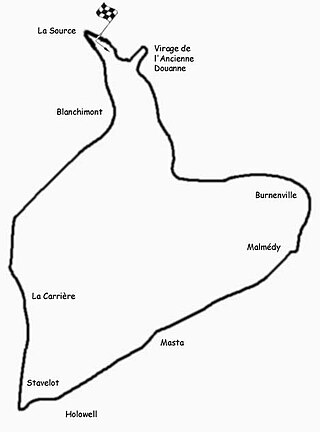
The 1933 Belgian Grand Prix was a Grand Prix motor race held at Spa-Francorchamps on 9 July 1933. The 40-lap race was won by Tazio Nuvolari, of Scuderia Ferrari, driving a Maserati. Second and third were taken by the works Bugatti drivers Achille Varzi and René Dreyfus.

The 1933 Italian Grand Prix was a Grand Prix motor race held at Monza on 10 September 1933. The race was held over 50 laps of a 10 km circuit for a total race distance of 500 km and was won by Luigi Fagioli driving an Alfa Romeo.




















